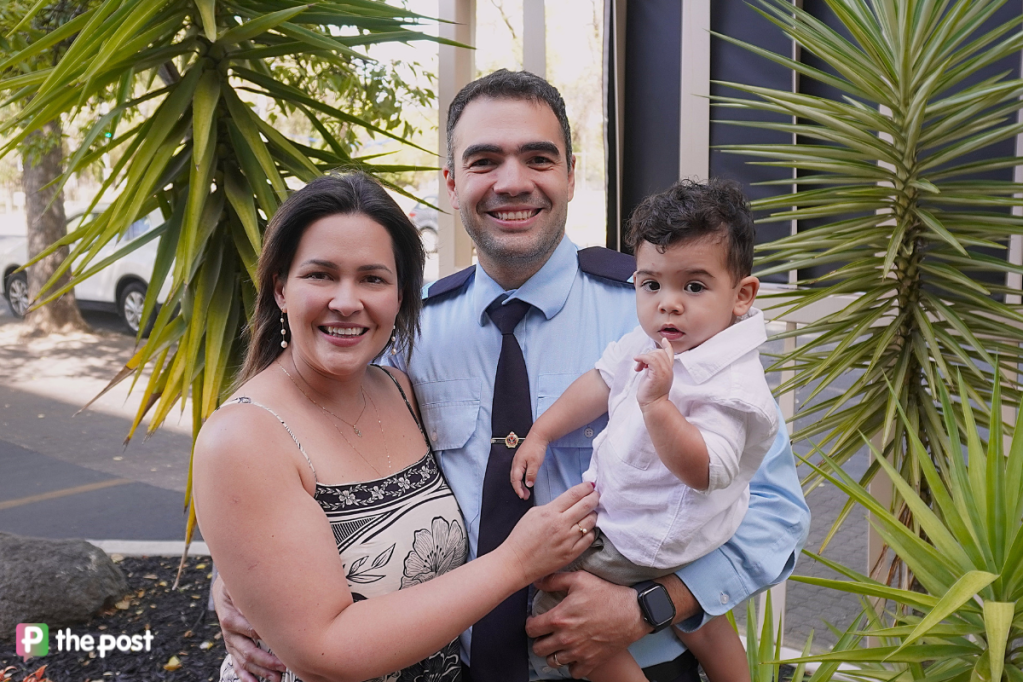‘Dodged a bullet’: Residents return home as flood threat eases
Townsville residents have been cautiously told they can begin returning to their homes as the city appeared to “dodge a bullet” with easing rainfall.
The North Queensland city’s swollen Ross River failed to reach the major flood level and peaked at 1.66 metres before it began subsiding to moderate.
People living in the “black zone” suburbs, which had been evacuated, were told on Tuesday they could go back to their properties.
Queensland Premier David Crisafulli said Townsville had avoided the dire scenario that was feared.
“There is no doubt that the city has dodged a bullet,” Crisafulli said.
“If you reflect that nearly six years ago to the day, people were picking up the pieces, and to think that in many cases, has been spared, is certainly a relief.”
However, returning residents were told to remain vigilant as the flood emergency could turn again if the rain resumed.
Rivers were still rising in some other catchments even as the rainfall petered out.
“Some catchments are holding steady or even starting to fall, but others are still continuing to rise in response to past rainfall,” meteorologist Miriam Bradbury said.
It’s feared Ingham’s swollen Herbert River would reach beyond the record level of the 1967 mark at 15.2 metres.
The Herbert River at Abergowrie Bridge is at 13.35 metres and rising while at the Ingham Substation – where the 1967 record was held – it has begun falling to 14.34 metres.
You might like
The Bureau of Meteorology warned that Tuesday could bring local heavy rainfall between Cairns and Townsville with a severe weather warning in place between Cardwell and Yabulu.
“Rainfall totals are expected to be lower than they were during the past weekend, but the rain is likely to be enough to prolong the existing flooding and potentially cause new areas of flooding,” Bradbury said.
She said totals could be anywhere from 10 to 100 millimetres.
The bureau is forecasting the rain to become patchier on Tuesday afternoon with thunderstorms and showers lingering for the rest of the week.
“Any further rain will continue to feed into the already swollen rivers, prolonging flood impacts,” Bradbury said
“A more significant clearance in the wet weather is not forecast to arrive until late in the week, or even early next week.”

Queensland Premier David Crisafulli meets with SES personnel. Photo: AAP
Thousands of people were evacuated and many were rescued across the region, with more than one metre of rain recorded near Townsville.
Queensland Police said there are nearly 300 people in evacuation centres across Townsville and Ingham.
The State Emergency Service responded to 46 calls since 3pm on Monday, with the majority for the agency to tarp leaking ceilings.
Other calls were for sandbagging to prevent floodwaters and supplying food or medication.
Ergon Energy restored power to Palm Island, Balgal Beach, Bluewater, Magnetic Island, and Giru on Monday afternoon
It has restored power to half of Cardwell and will continue repairs on Tuesday. It is unclear when Ingham will be reconnected given the significant flood damage.
Severe storms after heat
A cool change with temperatures plummeting by 12 degrees in half an hour could trigger a new round of severe thunderstorms in Victoria on Tuesday afternoon.
A heatwave sent temperatures soaring on Tuesday in Victoria, South Australia, NSW, Western Australia and Tasmania.
Stay informed, daily
But the steamy conditions were expected to ease mid-afternoon Tuesday in Melbourne following a days-long heatwave and wild winds wreaking havoc in fire-ravaged regions.
Bureau of Meteorology senior meteorologist Miriam Bradbury said westerly winds would be largely responsible for the chilled temperatures.
“The temperature could drop by 10 to 12 degrees in half an hour,” she said.
“But as the cool change crosses the south, it has the potential to spark a new round of thunderstorms with some of those storms severe.”
Thousands of lightning strikes on Sunday triggered a series of blazes in Victoria’s southwest.
However, balmy conditions are expected to persist in eastern Victoria, especially Gippsland, northeast Tasmania, the ACT, southern NSW and inland parts of South Australia and Western Australia.
These places should brace for another day of daytime temperatures six to eight degrees warmer than usual seasonal averages, Bradbury said.
A bushfire remains out of control at Victoria Range in the Grampians National Park with locals urged to leave immediately before conditions become too dangerous.
Winds in the area will change from a moderate to fresh southerly forecast for Tuesday, challenging the ability of fire crews to keep a number of blazes across the state under control.
The biggest of the fires still burning, in the Grampians, was a long way from over, Forest Fire Management Victoria chief fire officer Chris Hardman said.
He said while crews were fatigued, authorities were ensuring firefighters were being rotated.
“This is a long game, and they’re going to need to be maintain their capability and fitness to be able to do this for many more weeks to come,” he told reporters.
“It’s been a very long season, and we are still very much at the beginning of that season.
“We can expect this fire season to go through toward the end of February even into March.”
Horsham Incident Control Centre Deputy Incident Controller Ben Matthews said more than 500 firefighters, aided by multiple aircraft, were working to contain the fires, with a focus on asset protection particularly in the Victoria Valley.
He said strong winds had already caused numerous spot fires, but despite the dynamic and rapidly changing situation, firefighters from both Victoria and interstate were working tirelessly.
Temperatures are set to peak at 42C in Ouyen, 35C in Melbourne and Ararat, and 32C in Geelong.
All of Victoria is covered by a high fire danger rating on Tuesday.
– with AAP








